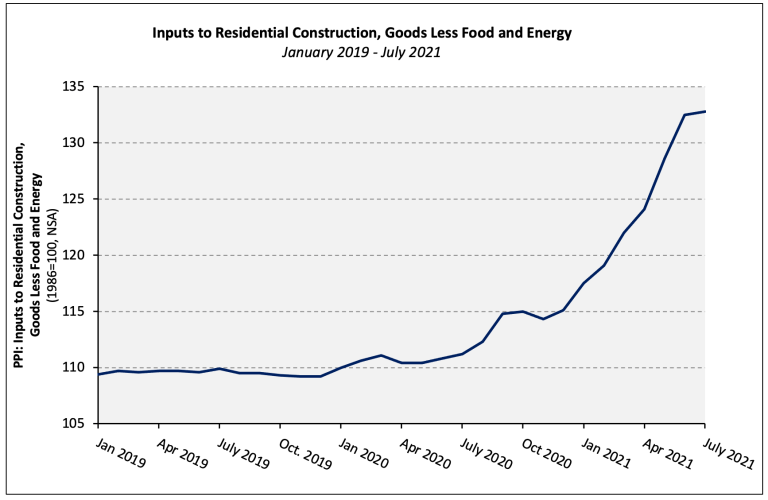
Yes, yes it does, but in different ways depending on the segment. First, let’s discuss why costs/budgets have significantly increased over the past year .
- During the pandemic, while people were shelter-in-place, the need to renovate their existing home increased precipitously so there was an increase in demand for contractor labor.
- With the combined increase in demand for labor, as well as some migration of contractors out of the area, skilled contractors started getting booked up months in advance creating a labor shortage.
- As general contractors and sub-contractor’s job pipeline get backed up from 3-6 months in advance, they start to increase their bids/estimates on job proposals increasing pricing.

- Early in the pandemic when imports totally stopped at the ports/borders, there were major supply chain problems with many industries. Materials like cabinets, countertops, fixtures and many other key house materials stopped coming in from countries like China, inventory became scarce in certain areas.
- Good example was in early 2021, lumber prices increased by 5-7x – not a typo. Fortunately, lumber prices have come down.
- With low inventory, prices began to increase.
- There are shortages of key finish items, such as high-end appliances with “smart features” that are seeing lead times of 6 months. Apparently, a backed-up supply chain issue created by a shortage of “chips” that is a key material in the production of certain appliances.
- So with all these delays, cost increases, labor shortages, general contractors must then factor in just more time, effort, challenges, delays that they also need to increase their projected margin to somewhat factor these issues into the equation.

What do any of these factors impacting construction costs have to do with real estate values? Here are some examples of the impacts I have seen first hand as both listing agent and buyers agent in the San Francisco Peninsula marketplace.
- Home buyers know about rising costs and long lead times that many buyers who would have considered a fixer upper, no longer will contemplate one. Thus, move-in condition homes are in higher demand than ever before.
- Conversely, fixer uppers in good neighborhoods that may have sold a few years ago with multiple offers, may not still sell right away or command as many offers and the spread between a fixer upper and recently renovated home have widened.
- Homeowners are finding it much more challenging doing a substantial home renovation or an expansion project due to this significantly increasing cost and longer project timeline. I have two different clients who have been planning an expansion project in the Peninsula over the past year including architectural renderings and general contractor estimates. Unfortunately, the estimates over the last 6 months increased by more than 50% making the financial economics of a home expansion not as clear cut as in the past.
- For example, let’s say a homeowner bought a San Mateo SFR 5 years ago for $1m that was a 3bd/2ba 1400 square feet that is now worth $1.5m. They want to expand to a 4bd/2.5ba 2100 square feet for $700k; after completion, it will be a beautiful fully renovated house worth $2.5m imputing $300k of “sweat equity”. However, let’s say the new budget for that project is now $1.0m. Then, the “sweat equity” benefit is negligible and the benefits would be the finished product being to the precise taste of the owner and ability to remain in the neighborhood; the downside is over 1 year of planning, decisions, project management and moving into a temporary apartment. The alternative is to just buy a bigger, nicer one for $2.5m and sell the smaller one. Of course, the decision is much more financially, psychologically and logistically more complex than that, but you can now see the dilemma.

- The net is that there are more move-up buyers in the market, which is why the $2-3m price point in good school districts with renovated houses and usable backyards to be highly competitive.
- Interestingly, I am seeing more houses listed by developers be put on the market to be sold with approved plans for a home buyer to construct. Their reasoning is they are too busy with other projects to start which likely is true. However, I am pretty certain the other reason is their tightening projected profit margins is squeezing builders.
As always, feel free to contact me at peter.tao@cbnorcal.com if you wish to discuss anything real estate related. Any advice from those who have recently undergone a renovation project? Any feedback or real world renovation war stories?